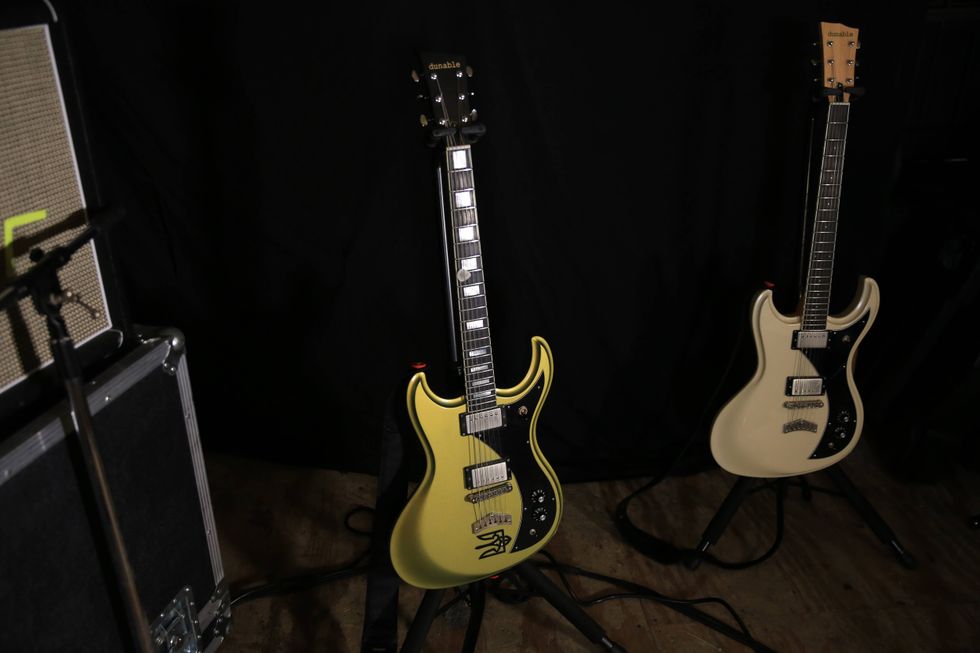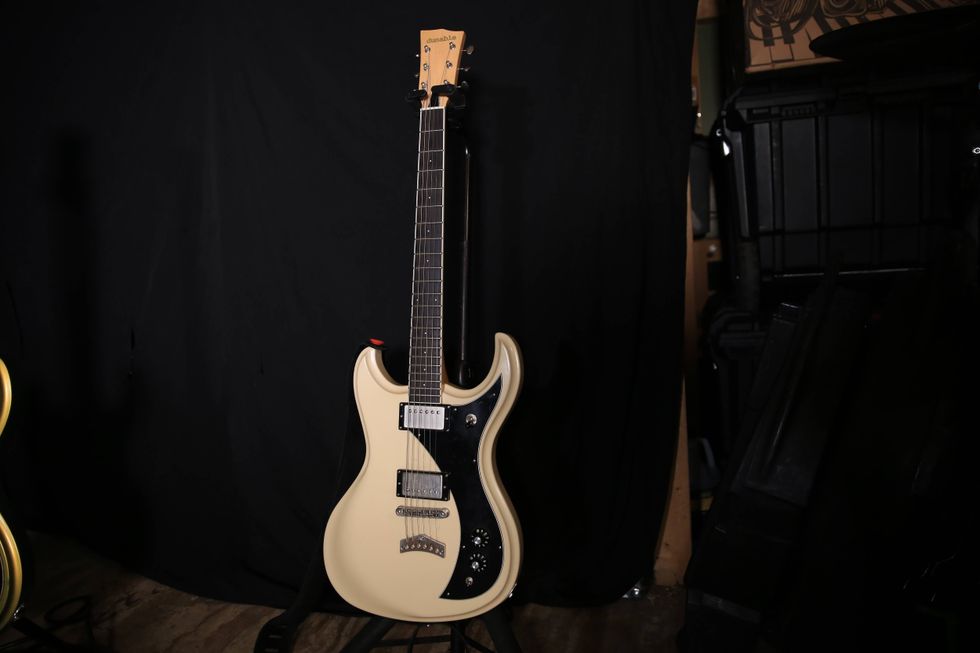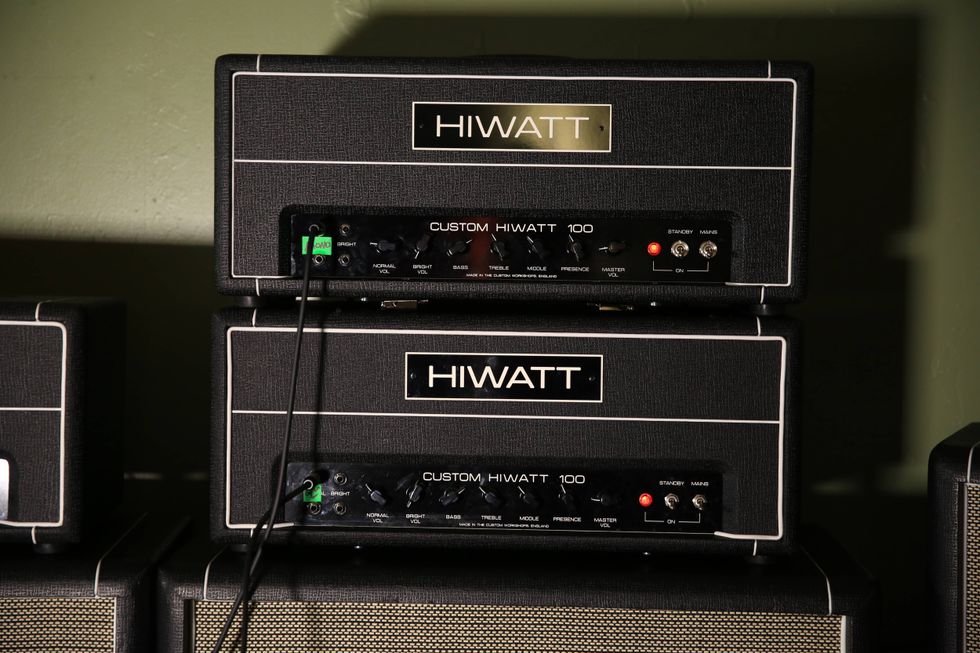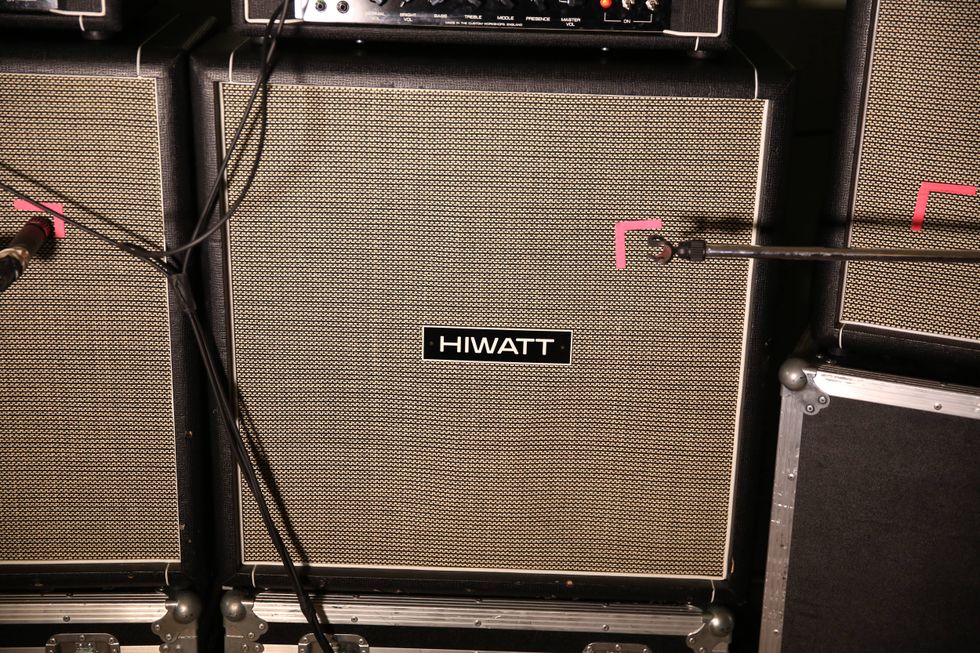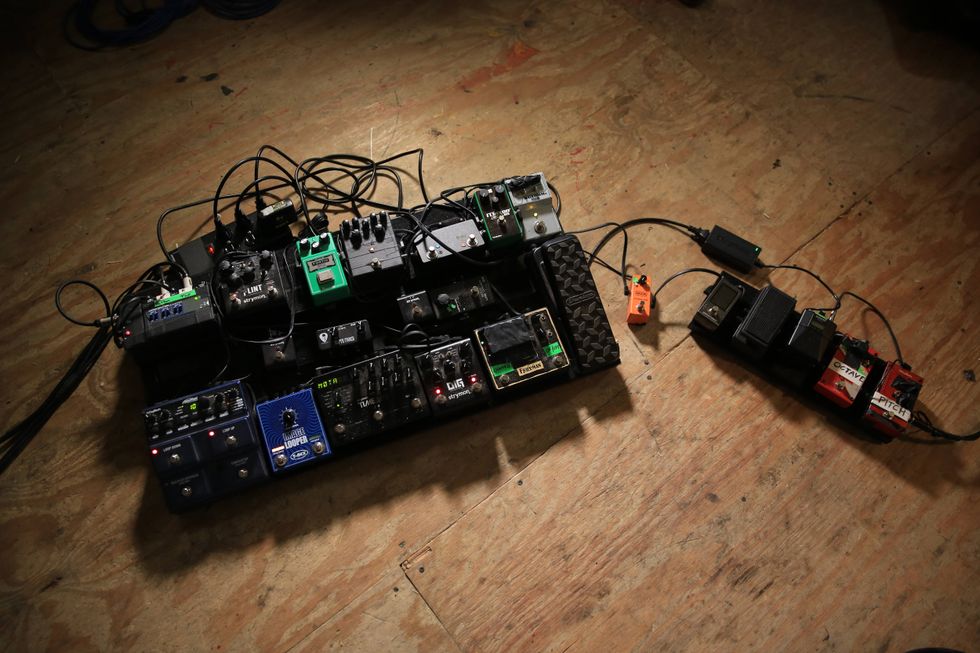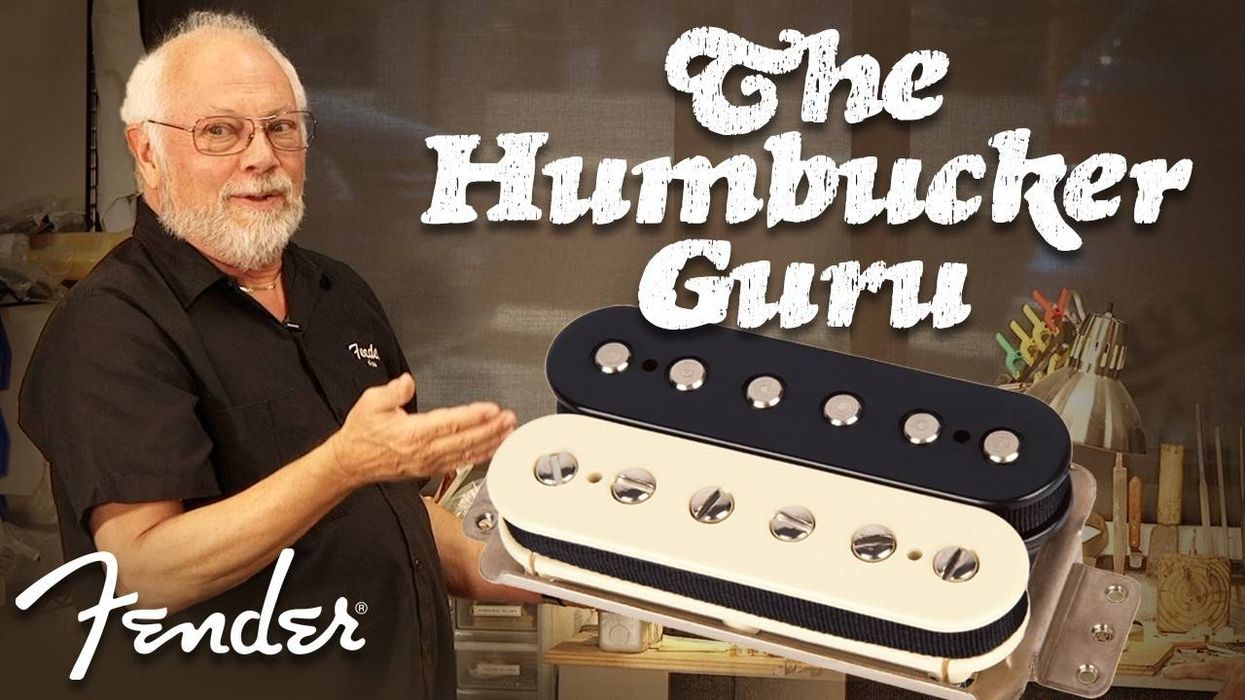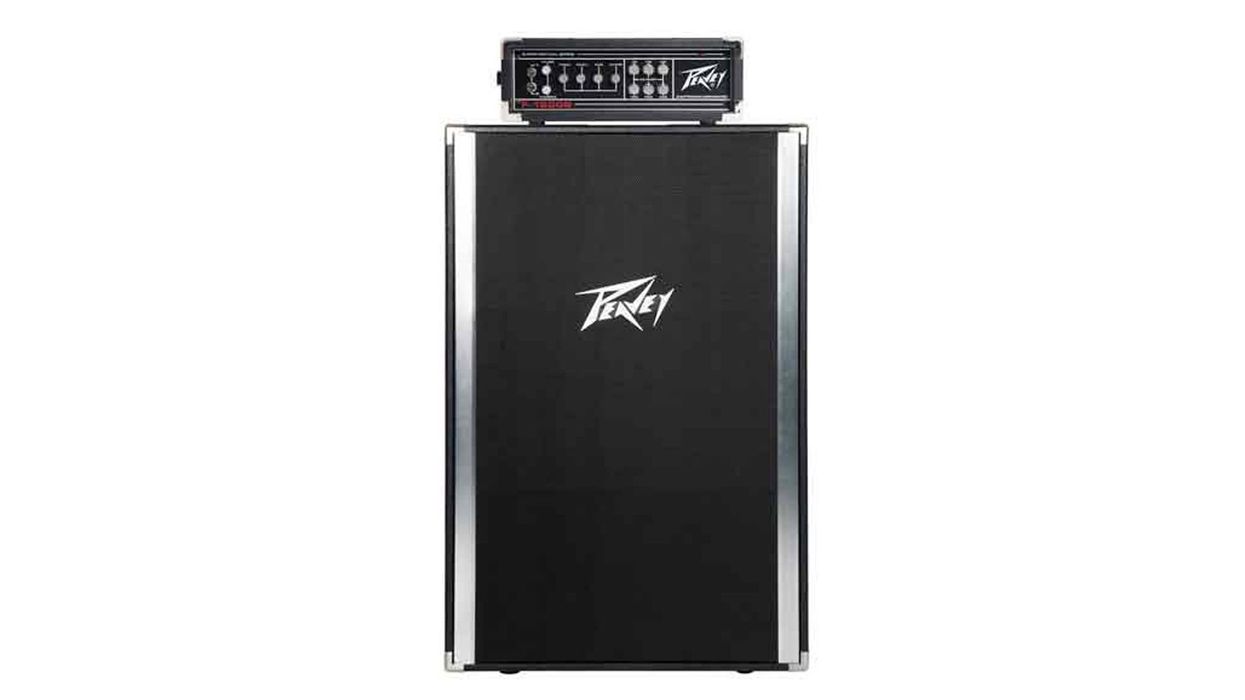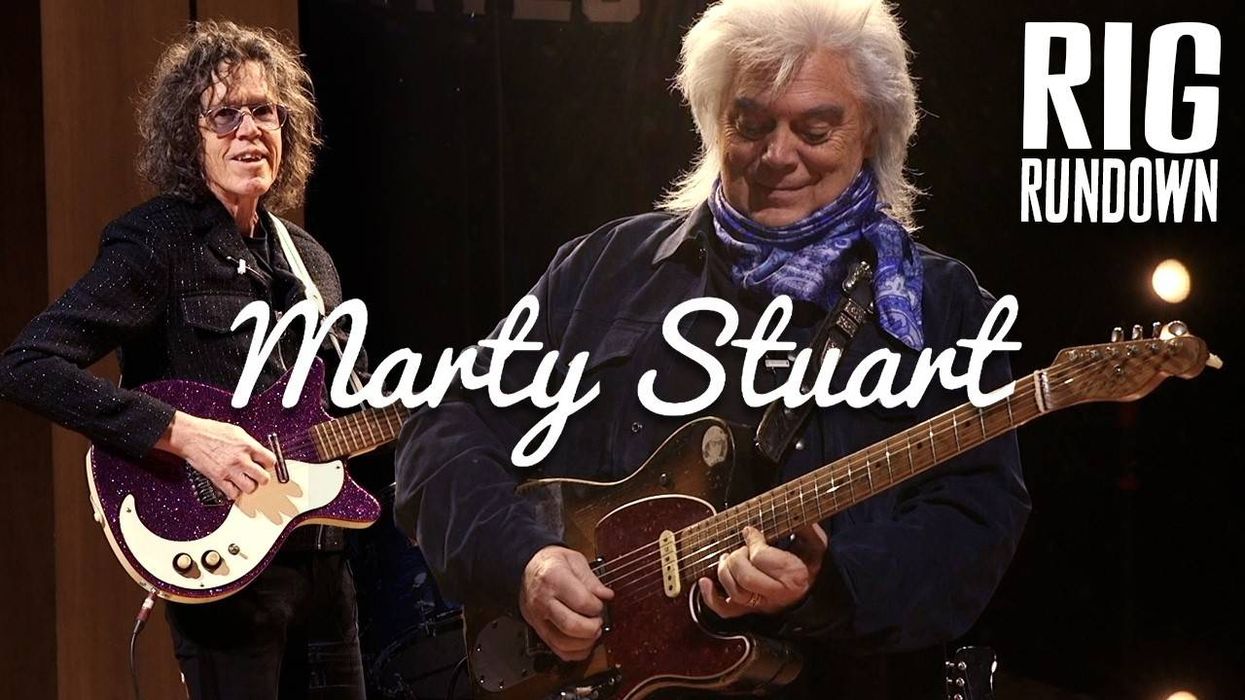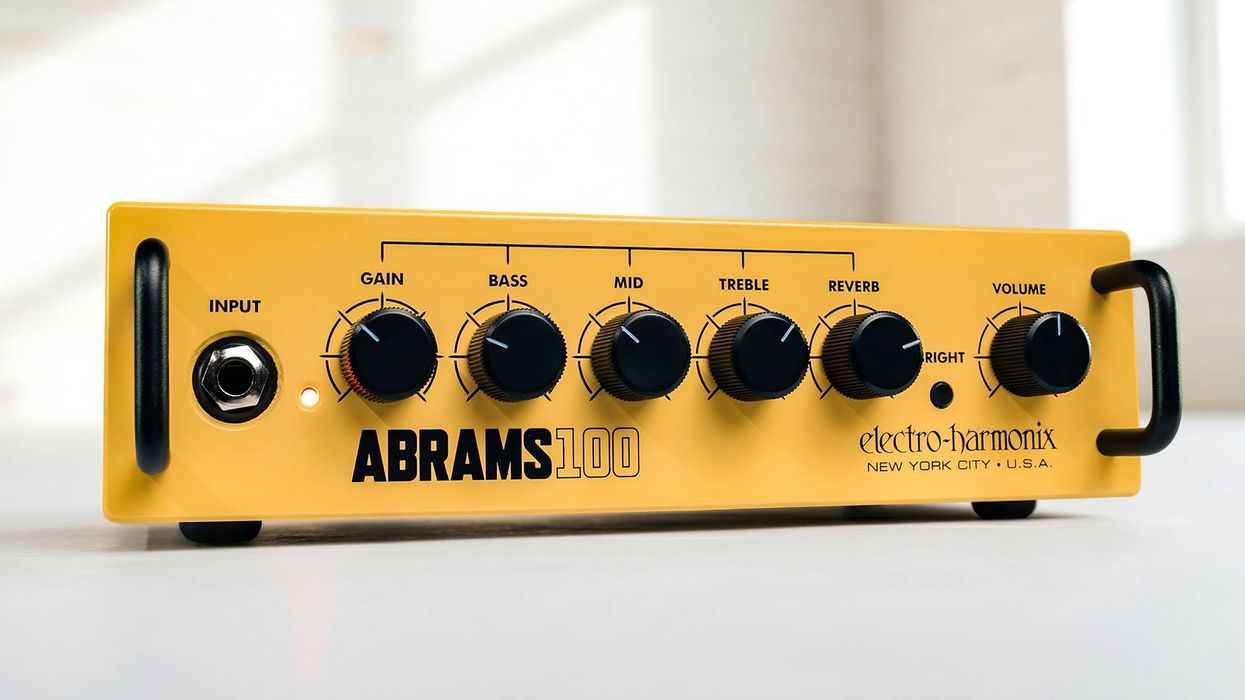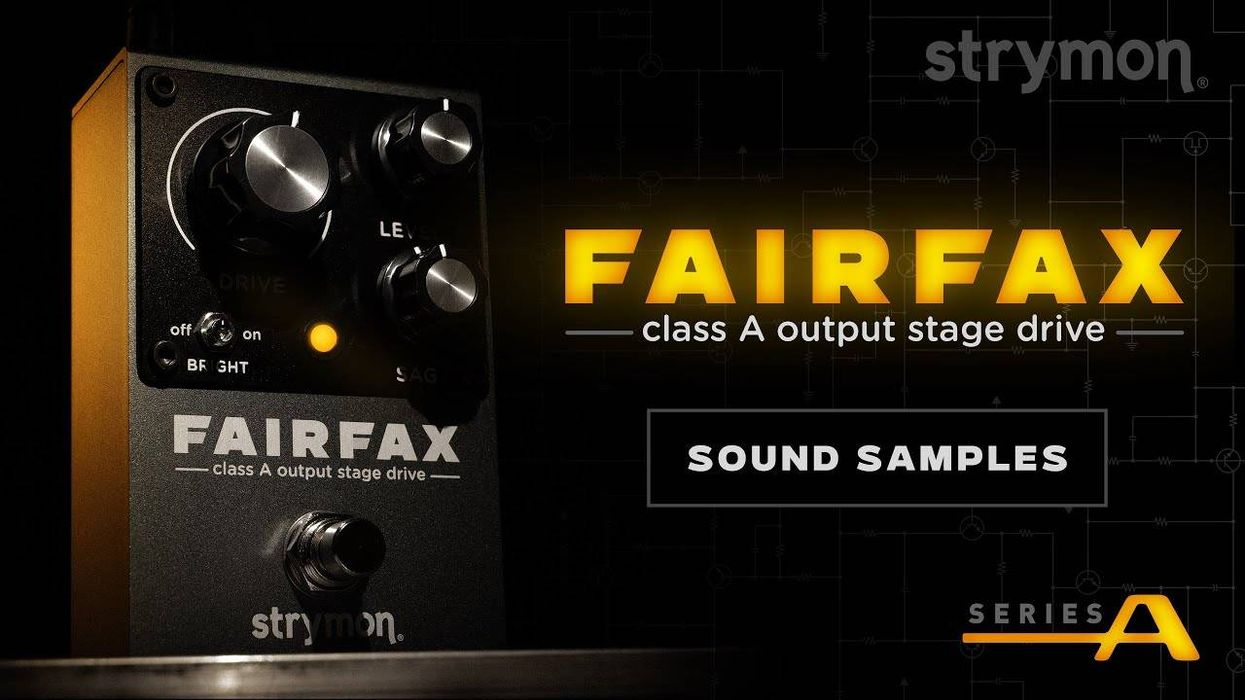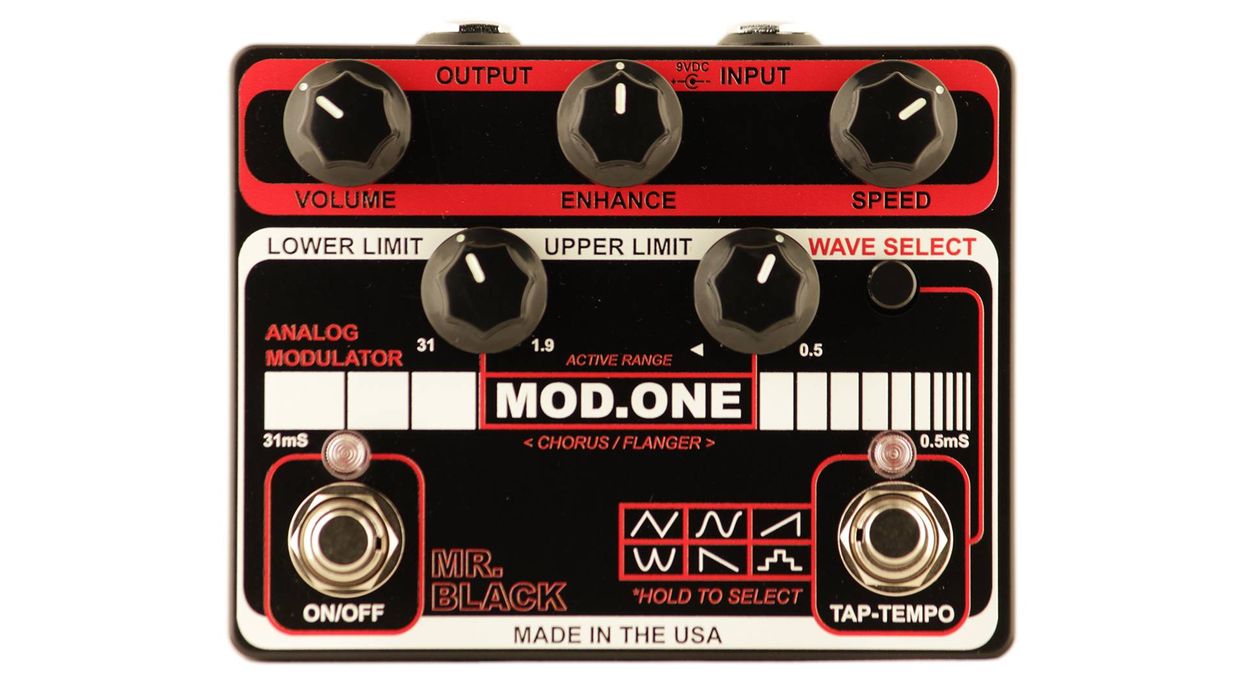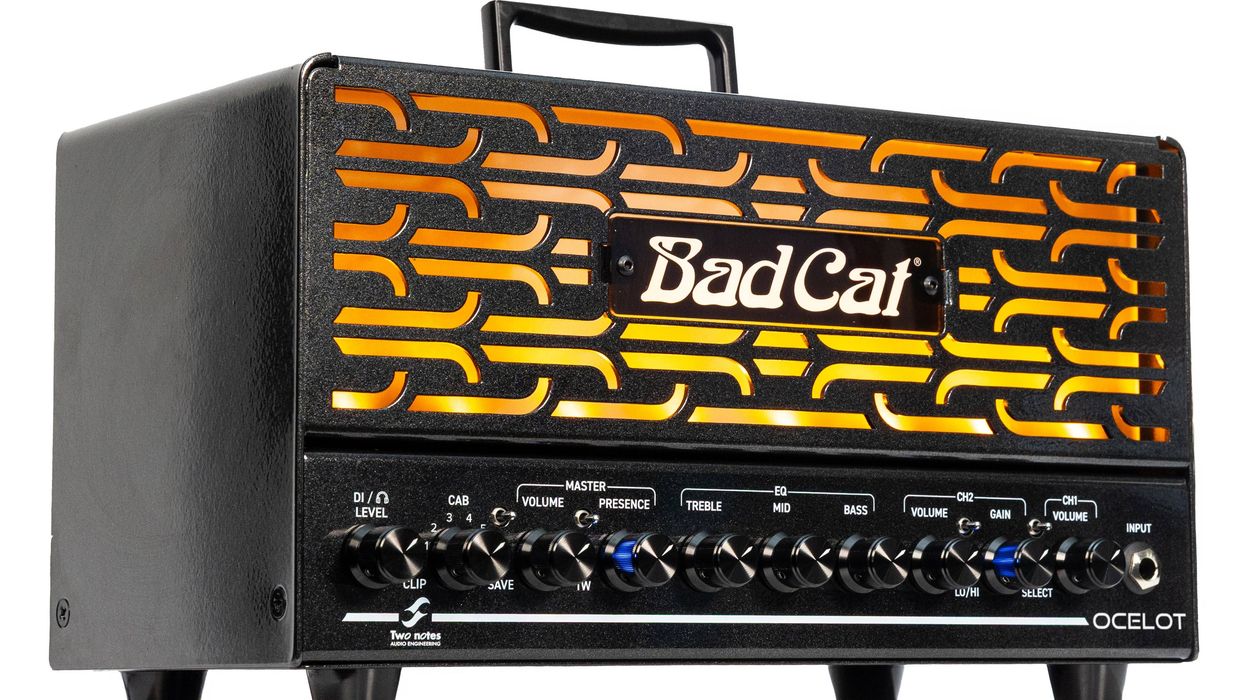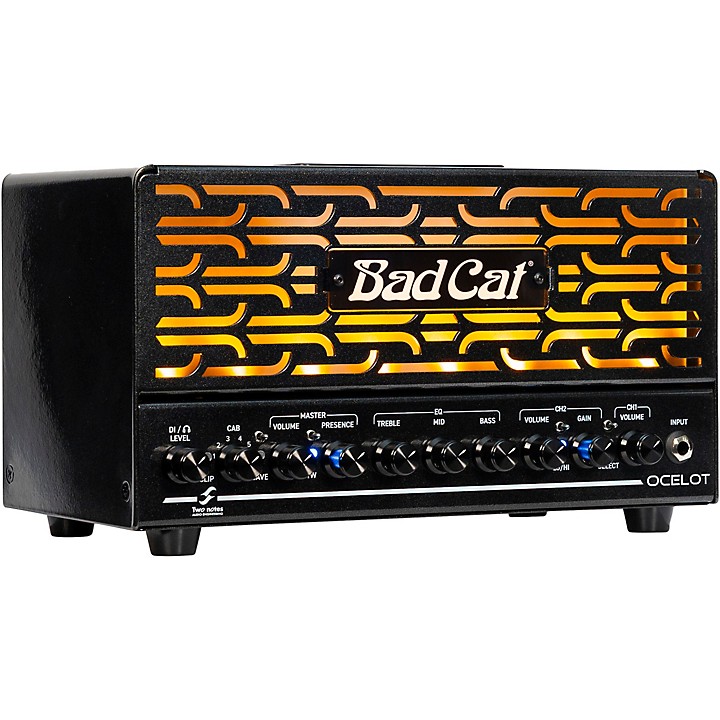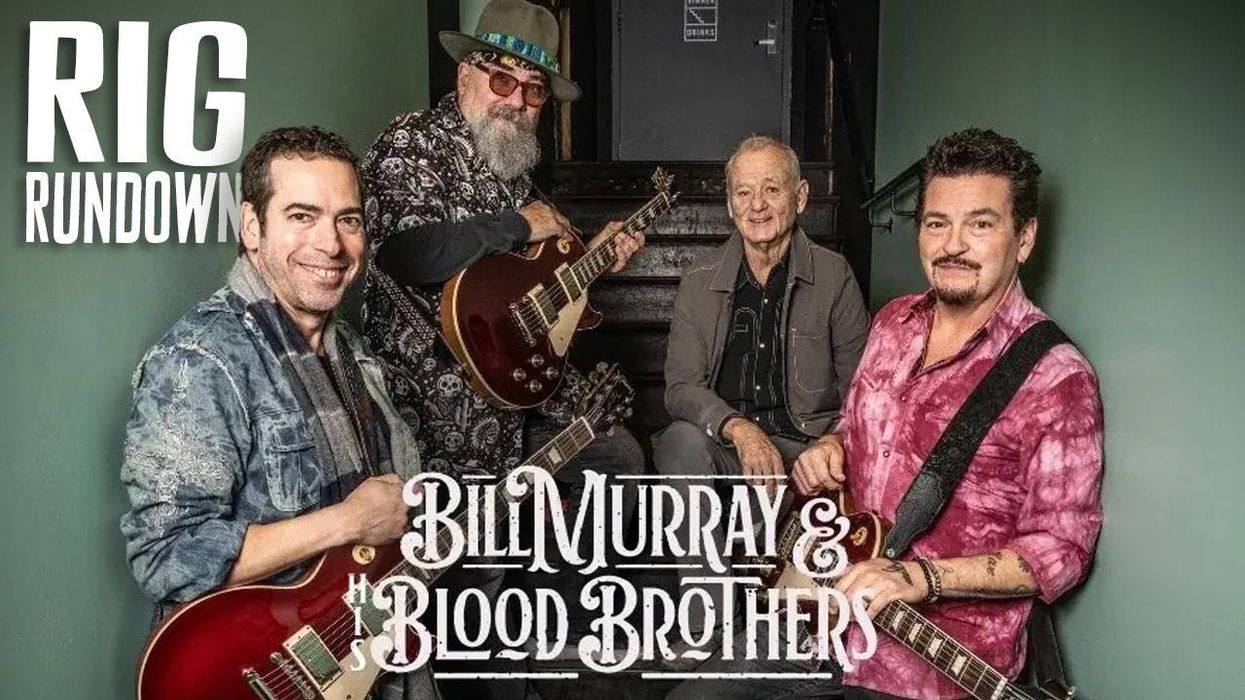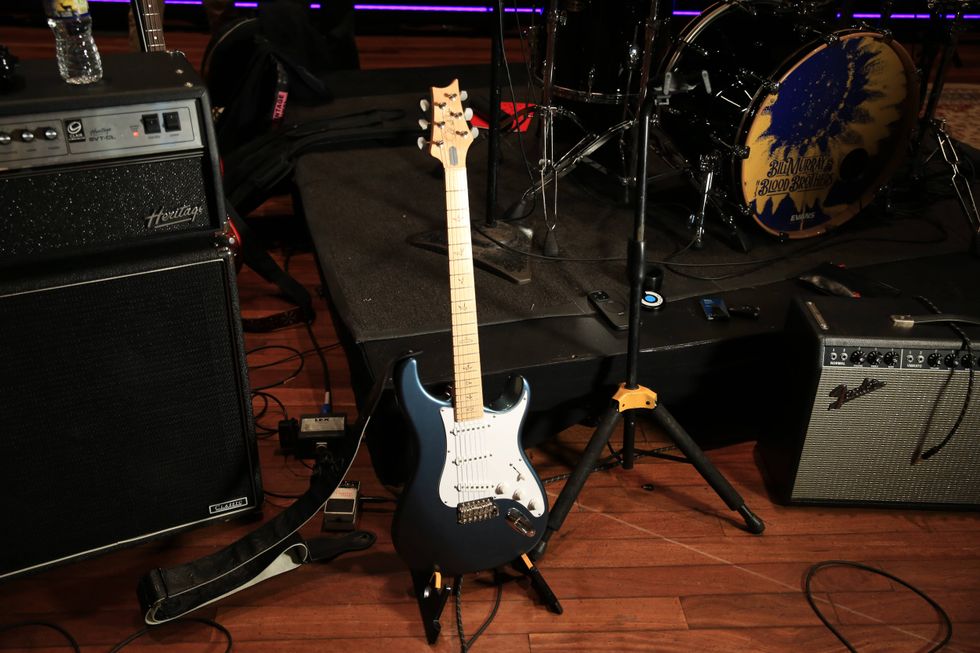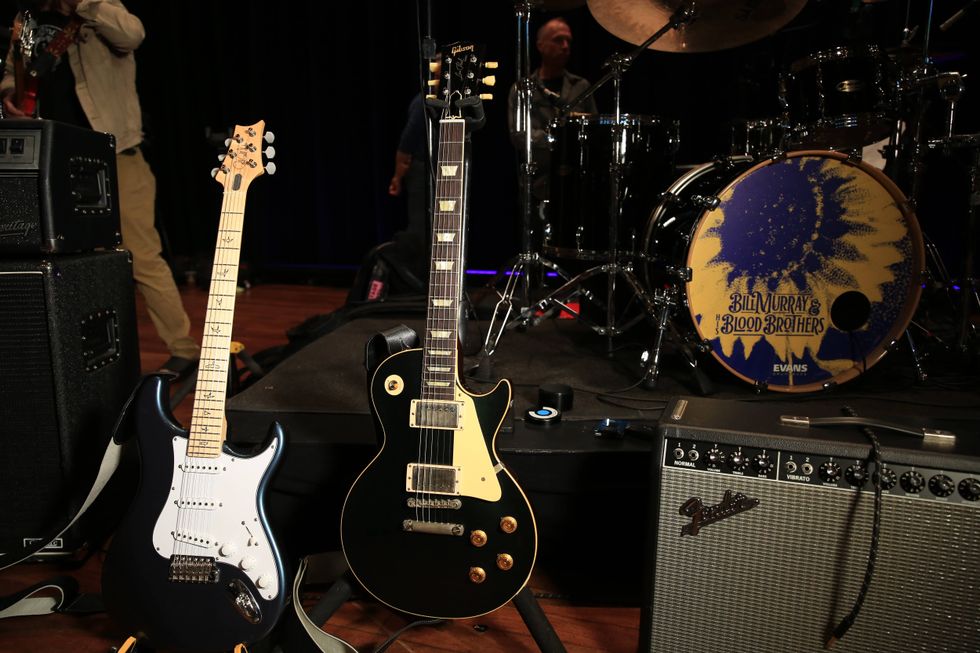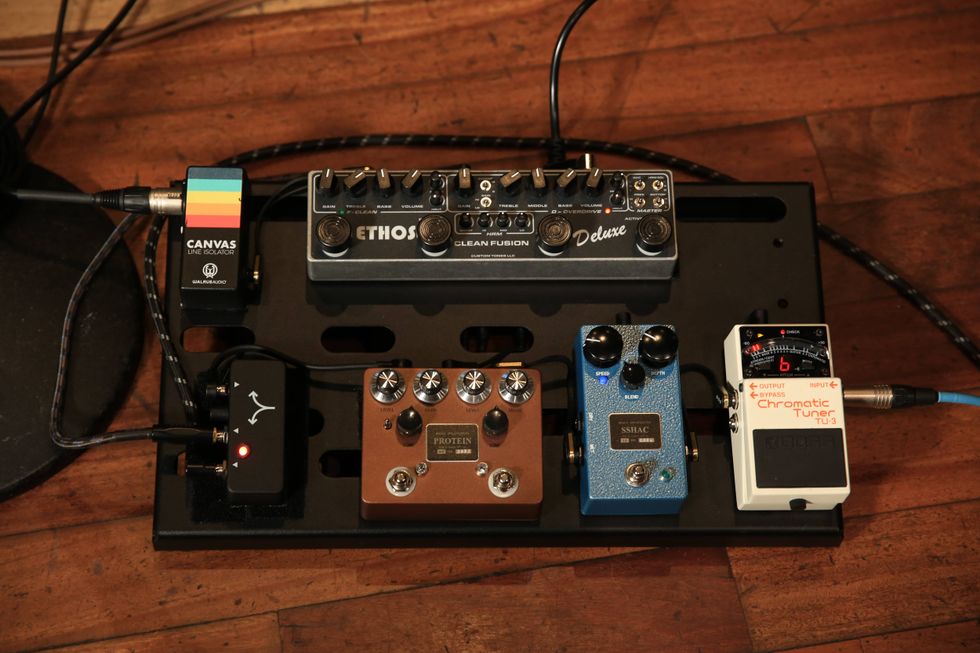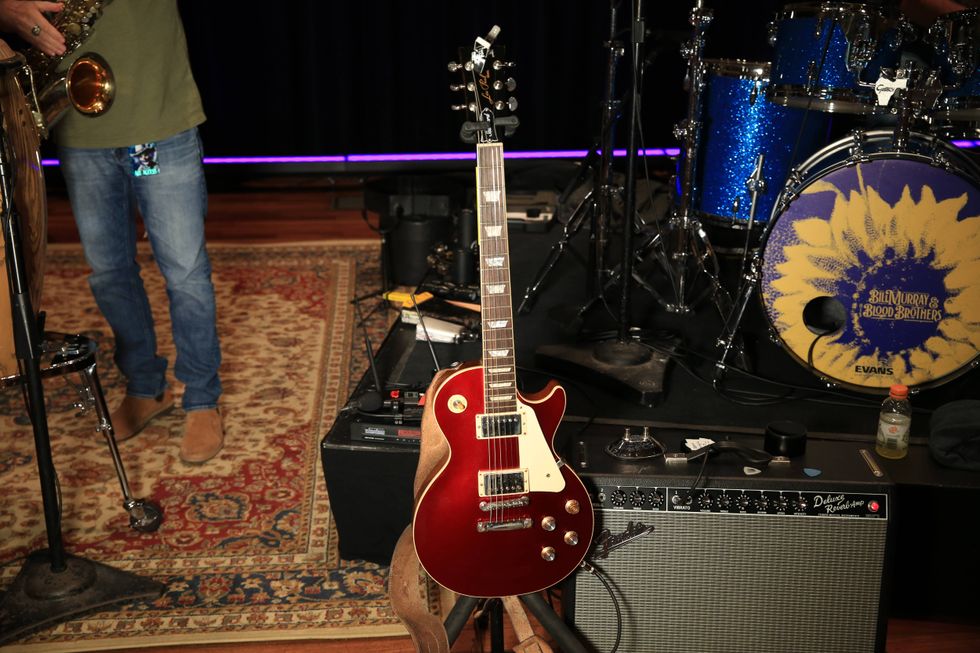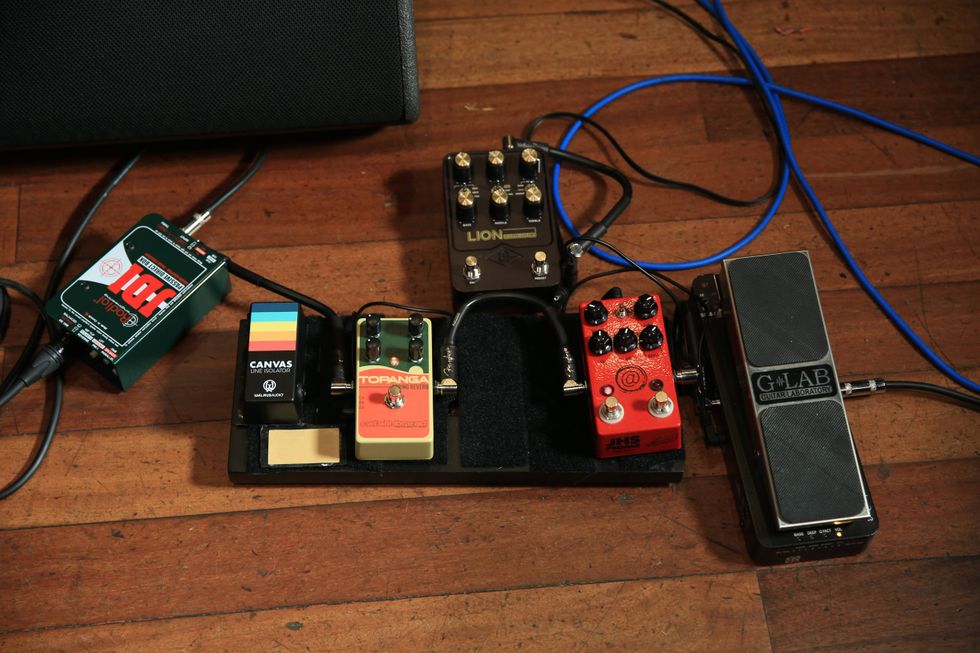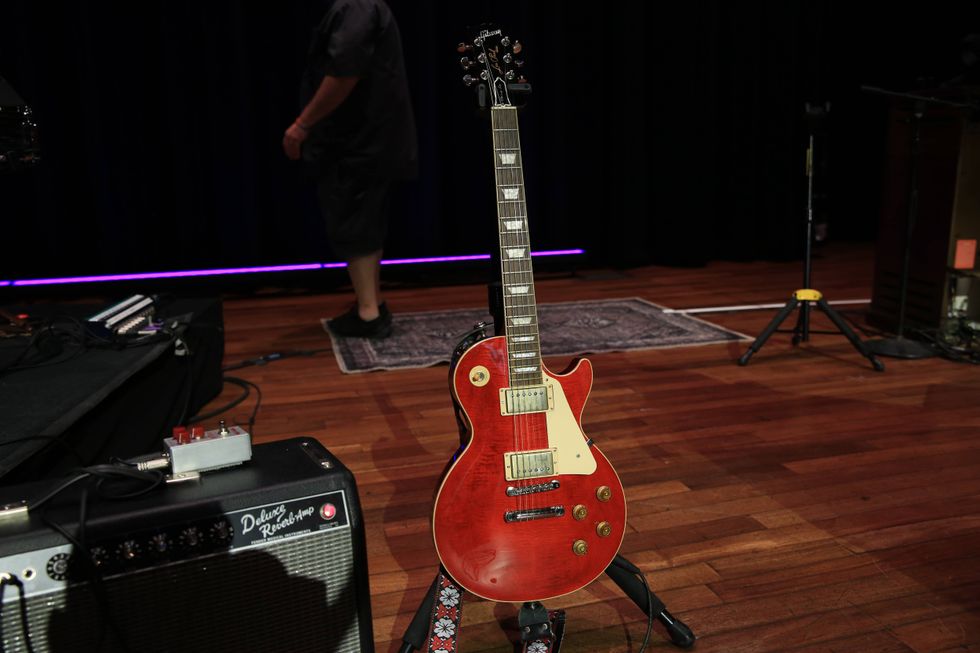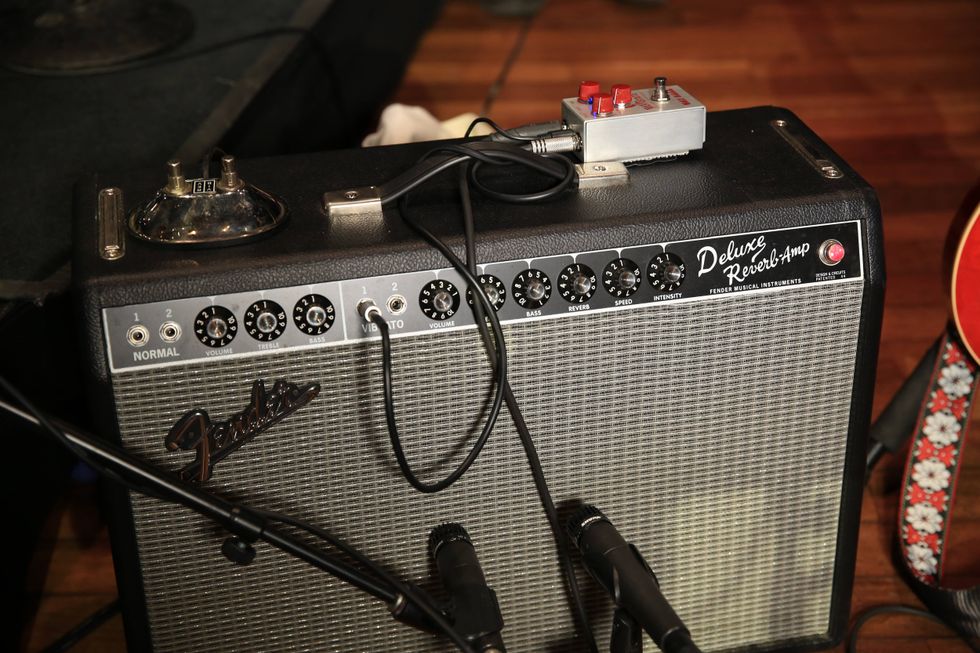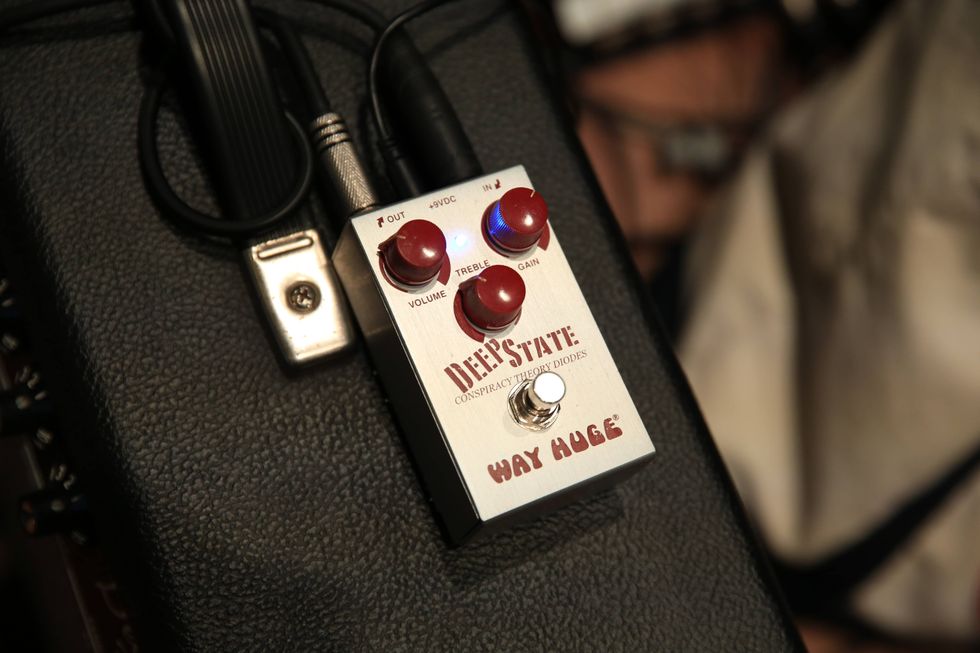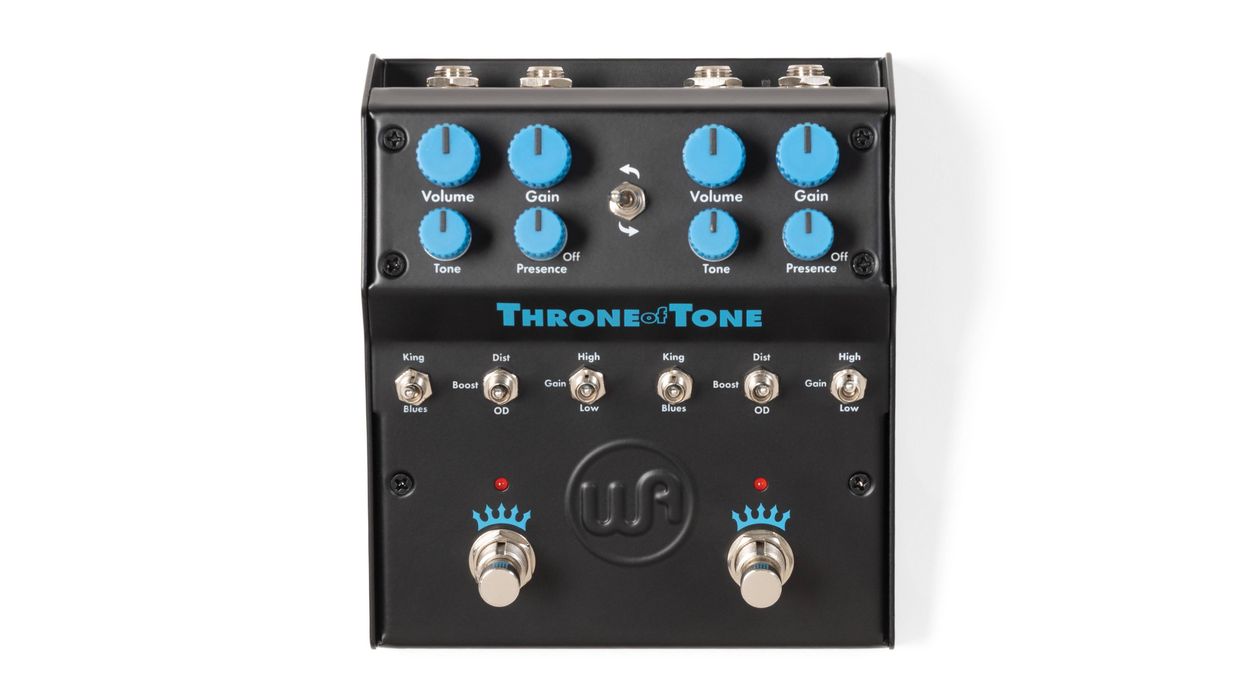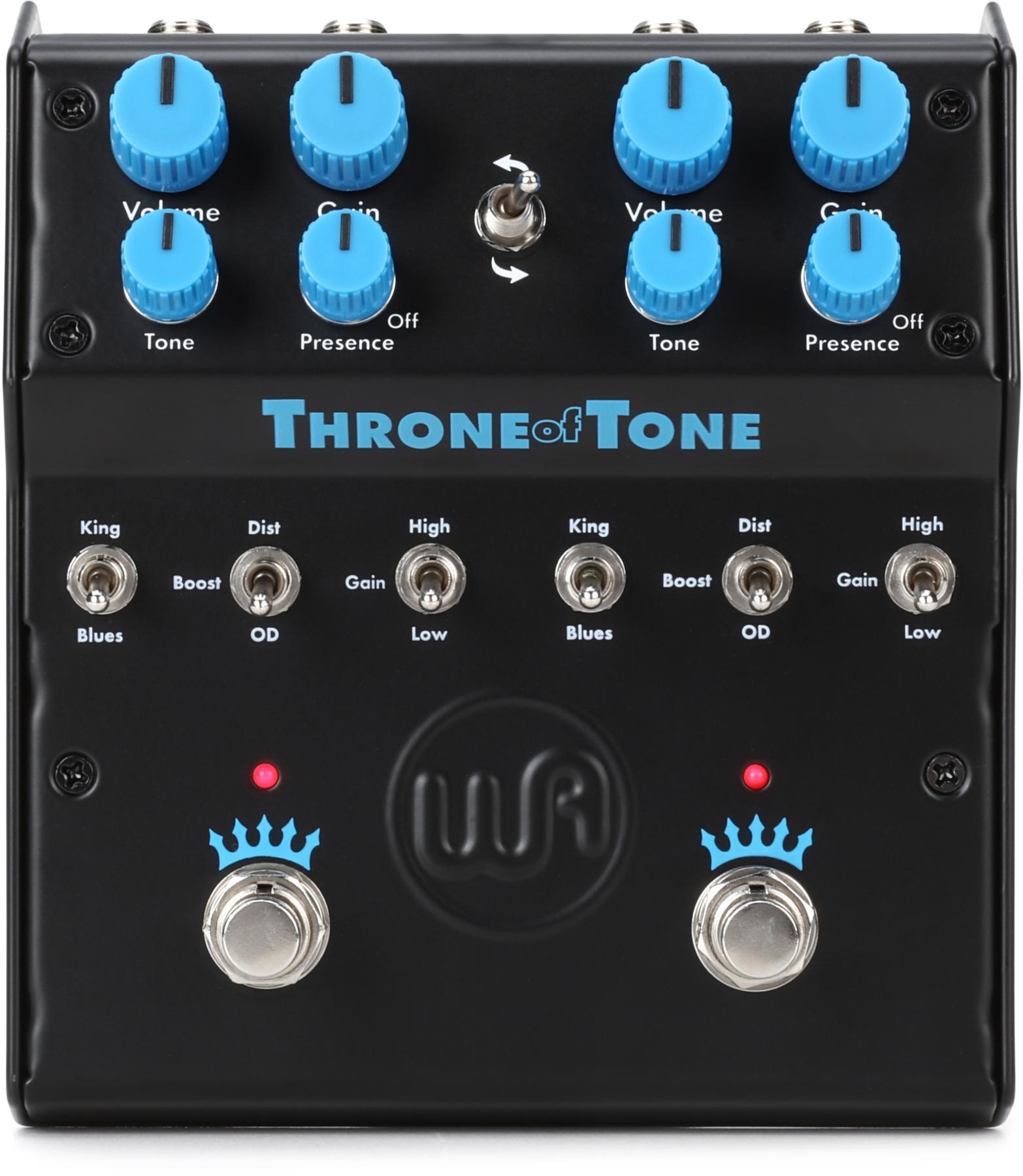When I was growing up, my parents told me to eat my vegetables and that good things came in small packages. To me it sounded more like a public service announcement for boring food and crummy gifts than good advice. Like many things your parents teach you that don’t sound so good at first, over time you realize there is more than a grain of truth to them—like when broccoli actually started tasting pretty decent, and carting around heavy stacks of amps became a drag. Mom and dad were on the right track! In the spirit of good things coming in small packages, the company responsible for giving us the Komet 60 and Constellation 30 brings us the Komet 19.
The Package
Looking a lot like the little brother of the Komet 60, the Komet 19 head measures a compact 17”x9”x8” and weighs just 25 pounds. It comes in a wide variety of colors, including Black, Baltic Blue, Emerald Green, Purple and Red, and it features the same high-quality components and construction as all Komet products. That means custom-designed output and power transformers, a laser-cut chassis made with solid 1/8” welded aircraft grade aluminum and military- grade 2W potentiometers. The relatively simple front panel consists of an input, a 3-way Bright Switch, Volume, Saturation and Tone controls followed by a jewel pilot light and Standby and Power switches. On the back, there’s an IEC power input, mains and HT fuses, a 4/8/16-ohm impedance selector and two speaker outputs. The Komet 19 is cathode biased and comes stock with Sovtek tubes, 2 EL84s and a pair of 12AX7s.Download Example 1
2008 Fender Strat with Sheptone pickups. Various pickup positions.
Komet 19 controls - Volume: 2 o’clock, Saturation: 10 o’clock, Tone: 11 o’clock. Bright Switch: off (center position)Download Example 2
2003 Les Paul R8 (Murphy) with Fralin P90 in the neck.
Komet 19 controls - Volume: 1 o’clock, Saturation: 11 o’clock, Tone: 12 o’clock, Bright Switch: down (position 1)Download Example 3
Reissue Danelectro 59 with stock pickups. Using neck pickup.
Komet 19 controls - Volume: 10 o’clock, Saturation: 1 o’clock, Tone: 12 o’clock, Bright Switch: down (position 1)Clips recorded with Pro Tools HD3, Chandler LTD-1 preamp, SM57 (Mercenary Edition) 1” from center of cone. Speaker cab is a Krank closed-back poplar 1x12 with mid-'70s tan Celestion 25. A small amount of Altiverb on all clips.
What’s Inside
Pulling the chassis out of the head box revealed some pretty astonishing workmanship. I was expecting to see a neatly wired turret board on par with most high-end modern amps, but instead the entire assembly is literally point-to-point construction: the components are directly mounted to the pots, jacks and tube sockets. There is no circuit board at all, which makes it clear that the folks at Komet spent a great deal of attention on the layout and design. It’s really a work of art.
Are you the little guy making that big noise?
Even though 19 watts doesn’t sound like that much power, it actually can produce a lot more volume that most people expect. Since the Komet 19 lacks a Master Volume, I contacted Komet and asked for a little background on their design philosophy to better understand what they were trying to achieve. According to Michael Kennedy and Holger Notzel, “Komet makes amps that are intended for live use. The amp must be capable of delivering a full range of tones from clean to singing leads, all controllable from the guitar via guitar volume control settings and pick attack, in a band setting. Master volume controls can be useful in achieving one (overdriven) sound at a given volume level, but they limit the highly dynamic interaction between guitar and amp that we strive for. Master volume amps just don’t clean up as well from the guitar, and when they do the clean volume is too low. In limiting the amount of drive delivered from the preamp to the power amp, the distortion now has to be created inthe preamp, with the power tubes mostly just amplifying that signal. Komets are designed to clip in a very specific way, beginning with the output stage. We feel that this gives the most dynamic response and control.” That makes sense. Let’s take a look at how it performs.
The Test Rig
To test it out, I ran the Komet 19 through a variety of guitars and cabs to best mimic what players might end up using. Cabs included a Krank 1x12” with an Eminence V12 Legend, a Mojave 2x12” with a pair of ‘60s Celestion Blues and a late ‘60s Marshall Basketweave 4x12” with original G12H- 30s. Guitars were a 2008 Fender American Standard Strat, 2003 Gibson Les Paul R8 Standard and a variety of Danelectros, Airlines, Schecters and Epiphones. Plugging the Les Paul direct into the 19 and running the Krank 1x12”, I set the amp with all the knobs at 5 and was immediately treated to an astonishingly accurate AC/DC “Back In Black” tone. The amp responded to the pick with an explosive attack and didn’t compress the way I’m used to with EL84-based amps. It reacted like the power and punch of a Marshall Superlead mixed with the chime and sparkle of an AC30. And it was loud and incredibly dynamic, with the loudest strums nicely breaking up into great a crunch tone. Rolling off the volume or picking lightly brought the amp back to sparkling clean territory, with just enough harmonic distortion to sound complex.
Curious about the Saturation control, I cranked it up to 10 and laid into a big, open G chord. Yeah, that’s what I’m talking about… this is where the amp lives! According to the manual, the Saturation control adjusts the amount of signal going into the second gain stage, so lower settings allow for more headroom in the preamp and higher settings yield a more saturated, compressed overdrive character. It is this control that really sets the Komet 19 apart from other designs. I found it to be very versatile, especially when swapping out guitars that had different pickup types. With the Les Paul, it brought the amp into beautiful, blooming overdrive that sang and sustained effortlessly and worked very much in tandem with the volume control. Obviously, at the lower volume settings it didn’t break up like a master/ volume configuration, since it isn’t designed that way. But it did allow for a huge variety of sounds to come out of a single guitar. It also proved that a simple and effective design is paramount in letting the true voice of a guitar come through. The Les Paul sounded every bit like a Les Paul, and the Strat…
Plugging in the Strat, I decided to change cabs to the 2x12”. What a combination! The AlNiCo speakers combined with the single coil pickups brought the amp into a totally different sonic territory. Since the Celestion Blues really focus in on a specific midrange frequency, I found the tone control and bright switch very helpful in dialing up killer lead and rhythm sounds. The 3-way Bright switch is off in the center position and offers a normal bright boost in the bottom and even more brightness in the top position. With the Strat I had to watch for it in the brightest position, because it tended to push beyond the comfort zone and got a bit “ice-picky” on the top. However, rolling back the volume cleaned it up, and it sparkled so nicely that it made me realize that there wasn’t a bad sound to be gotten out of the 19. In a band situation that extra bite might be just what’s needed to sit on top of the mix. The lower bright position with the tone set at about 2 o’clock seemed to be the best balance for my taste; it offered all the chime and clarity you could ever ask for.
To round out the testing I ran the 4x12” cab in a bigger room with a variety of guitars and settings. The 19 had no issue pushing the cab and sounded nearly as loud as my 50-watt non-master Marshall. It sounded massive with an Epiphone Sheraton on the neck pickup with the volume and saturation cranked, and once again it showed how well the true voice of the guitar came through. With a flick of the bright switch I was able to roll back the volume and get into Kinks territory with a barking and authoritative spank. Wrapping up the guitars, I also played a Danelectro ‘59 DC through the 19 into the Krank 1x12” and was able to pull out some beautiful cleans reminiscent of Jimmy Page’s “White Summer/ Black Mountainside,” as well as the gritty “Kashmir” vibe. Amazing stuff.
The Final Mojo
While there’s no master volume, channel switching or effects loop on the Komet 19, it’s easy to forget about that when you experience the pure tone of this monster. It belies its size with a gigantic range of tones that let your instruments’ true personalities sing. It’s quiet, efficient and simple to operate and a testament to great design. What’s more, Komet informs us they will soon release a combo version, as well as a very cool 1x12 extension cab with a Celestion Heritage G12H30. For the choices Komet made in designing this amp, I cannot think of a single thing not to love about it.
Buy if...
you want a portable powerhouse with versatility and killer tone that showcases the personality of each instrument.
Skip if...
you need a lot of bells and whistles.
Rating...
MSRP $2295 - Komet Amplification - kometamps.com |

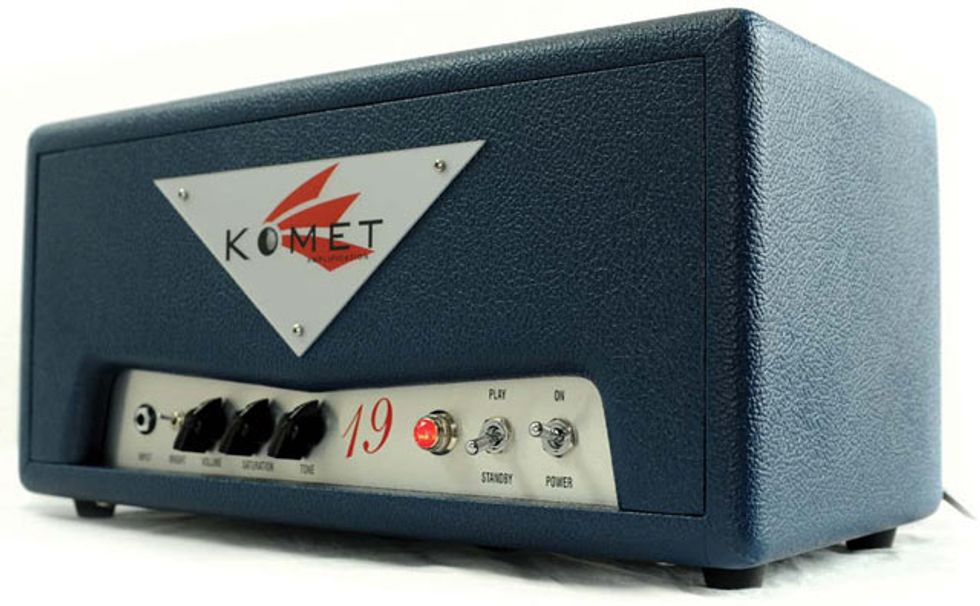
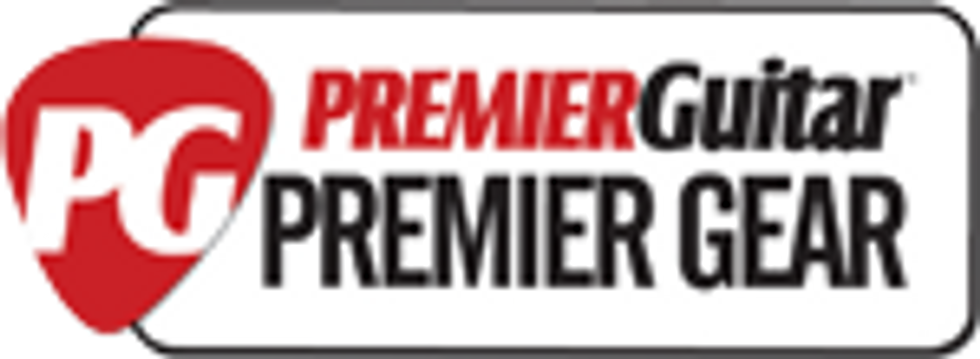
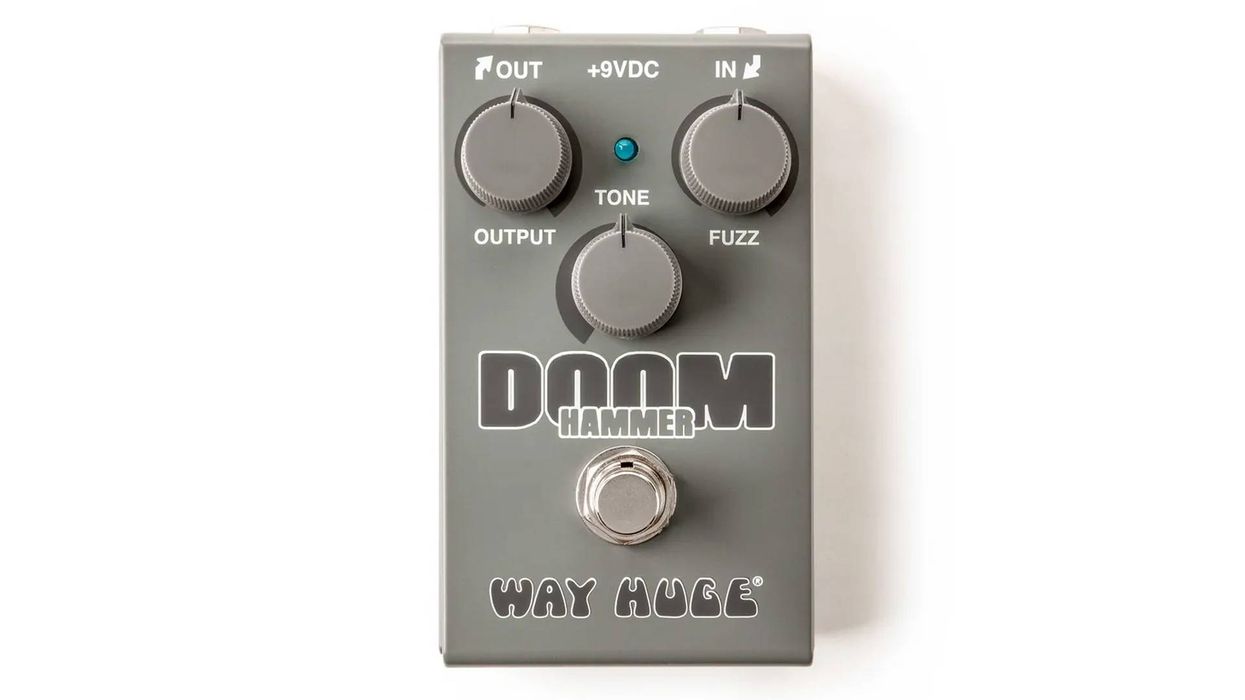
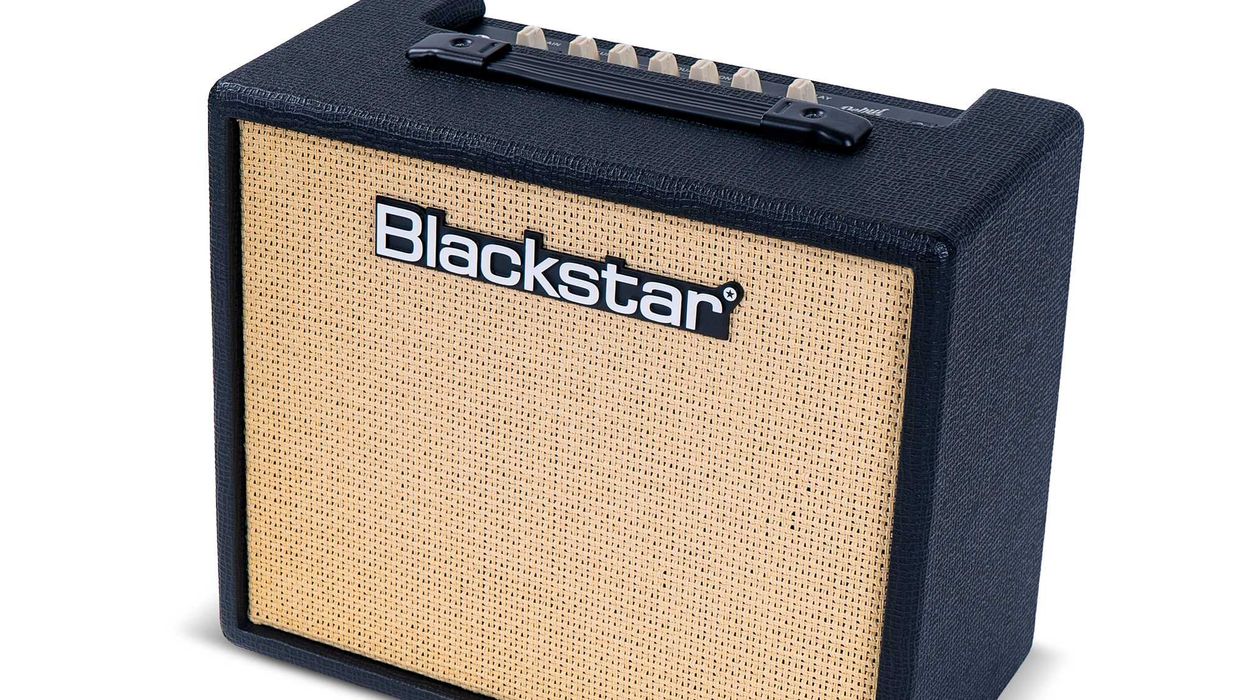
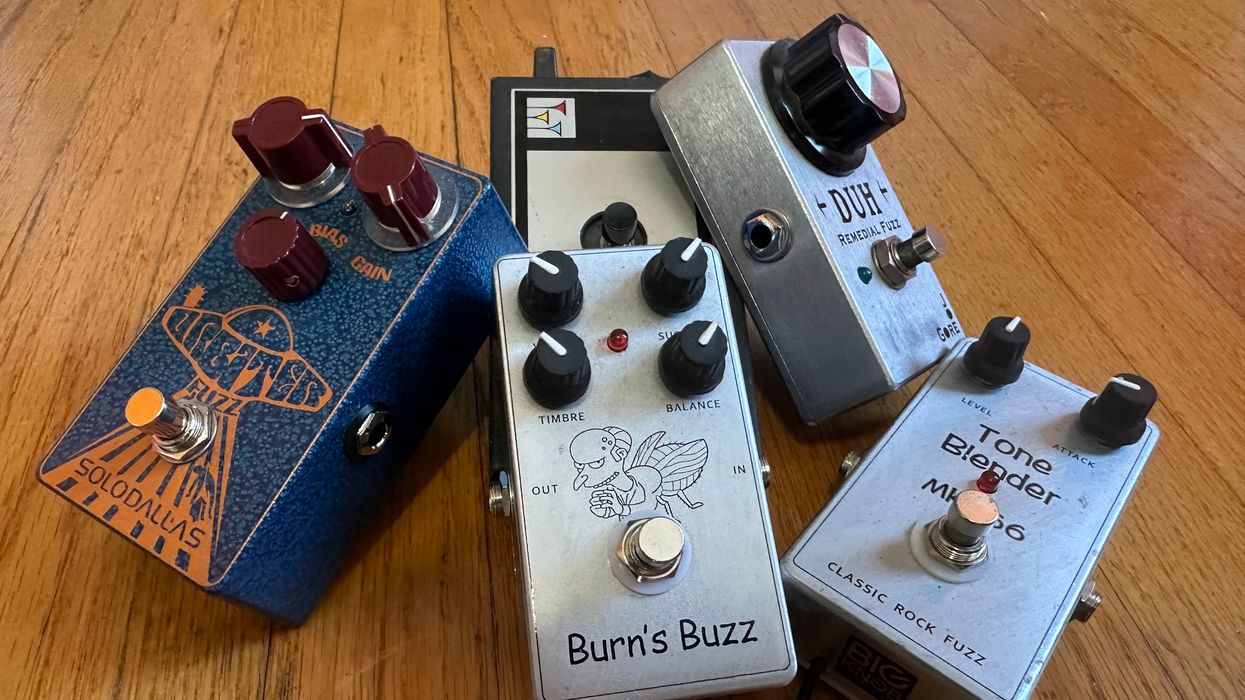

![Rig Rundown: Russian Circles’ Mike Sullivan [2025]](https://www.premierguitar.com/media-library/youtube.jpg?id=62303631&width=1245&height=700&quality=70&coordinates=0%2C0%2C0%2C0)
